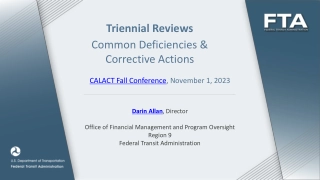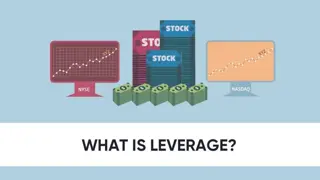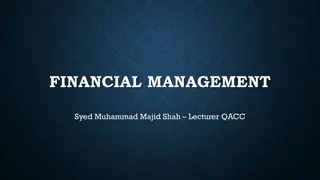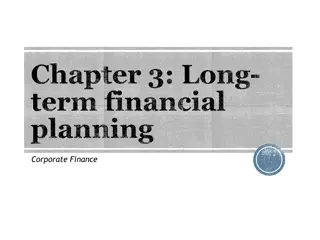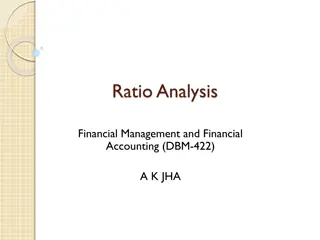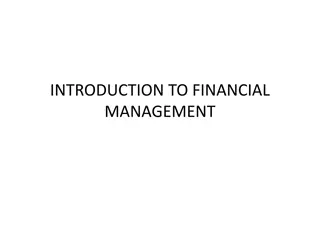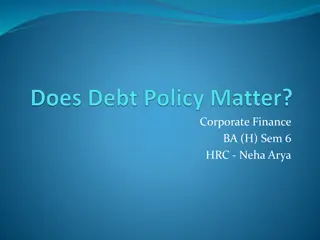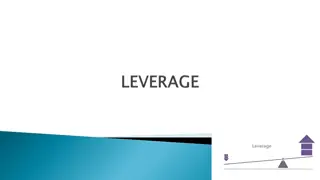
Financial Leverage and Risk Management in Business
Explore the concepts of leverage, types of risks, and operating leverage in financial management. Learn about measuring leverage, types of risk, and how to optimize financial leverage for business growth and profitability.
Download Presentation

Please find below an Image/Link to download the presentation.
The content on the website is provided AS IS for your information and personal use only. It may not be sold, licensed, or shared on other websites without obtaining consent from the author. If you encounter any issues during the download, it is possible that the publisher has removed the file from their server.
You are allowed to download the files provided on this website for personal or commercial use, subject to the condition that they are used lawfully. All files are the property of their respective owners.
The content on the website is provided AS IS for your information and personal use only. It may not be sold, licensed, or shared on other websites without obtaining consent from the author.
E N D
Presentation Transcript
FINANCIAL MANAGEMENT Leverage Doyel Aich Assistant Professor of Commerce Vidyanagar College
TOPICS OF DISCUSSION Definition of Leverage Types of Risk Concept of Operating Leverage Measurement of Operating Leverage Concept of Financial Leverage Measurement of Financial Leverage Concept of Combined Leverage Measurement of Combined Leverage Concept of Trading on Equity
DEFINITION OF LEVERAGE Van Horne defines Leverage refers to the use of fixed costs in an attempt to increase(or, lever up) Profitability According to Ezra Soloman Leverage is the ratio of net returns on shareholder s equity and the net rate of return on total capitalisation . S.C.Kuchhal defines The term leverage is used to describe a firm s ability to use fixed cost assets or funds to magnify the return to its owners .
TYPES OF RISK Business risk: It is an essential element of business. It cannot be avoided but it can be minimised by taking timely suitable measures by the businessman. According to Brigham, Conceptually the firm has a certain amount of risk inherent in its operations-this is its business risk . Financial risk: In a capital structure of a firm there may a combination of debt and equity capital. Whatever may be the amount of debt capital it is undeniably true that firm must have to pay to the creditors fixed amount of interest. It may be stated that if the amount of debt capital increases and if the firm is unable to earn sufficient amount of revenue, the firm will be exposed to financial risk.
CONCEPT OF OPERATING LEVERAGE Operating leverage is a measure of a firm s level of fixed cost relative to its variable costs. According to Brigham, . A high degree of operating leverage, other things held constant, implies that a relatively small change in sales results in a large change in operating income .
MEASUREMENT OF OPERATING LEVERAGE Degree of operating leverage= % change in operating profit/% change in sales volume > 1 If the degree of operating leverage is 1, it is to be understood that there is no operating leverage. If it is greater than 1, it is to be considered that there is operating leverage. DOL= 1+ (EBIT+Fixed Cost)/EBIT
CONCEPT OF FINANCIAL LEVERAGE Financial leverage is a financial technique that uses borrowed funds or preferred stock(items involving fixed financial cost) to improve the return on equity investment. Financial leverage is often referred to as trading on the equity . According to Gitman, financial leverage is .. Ability of a firm to use fixed financial charges to magnify the effects of changes in EBIT on the earnings per share .
MEASUREMENT OF FINANCIAL LEVERAGE Degree of Financial Leverage= % change in EPS/% change in EBIT > 1 DFL = EBIT/EBIT-I-{Dp/(1-t)} Here I = Interest on debt capital t = tax rate Dp= Preference dividend n = no. of equity shares
CONCEPT OF COMBINED LEVERAGE Operating leverage helps to determine percentage change in operating profit (EBIT) due to percentage change in sales. From operating leverage risk can be determined. Financial leverage, on the other hand, measures percentage change in earning per share (EPS) due to percentage change in operating profit. It helps to explain the financial risk.
MEASUREMENT OF COMBINED LEVERAGE Degree of Combined Leverage= % change in EPS/% change in EBIT DCL= 1+ {(F+I)/PBT}
CONCEPT OF TRADING ON EQUITY Trading on equity is a financial strategy that uses borrowed funds to increase to. Corporate body leverages its financial standing to procure debt and enhance the earnings of shareholders. In other words, a company utilises its equity strength to avail debts from creaditors, and thus the name of the strategy. Advantages of Trading on Equity: 1. Enhanced earnings 2. Favorable tax treatment



